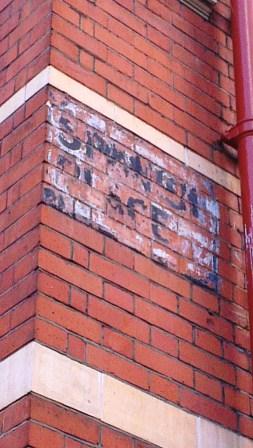Leverhulme Major Research Fellowship (2020-23): Hispanic London: Culture, Commerce, and Community in the Nineteenth-Century City
Professor Kirsty Hooper (k.hooper@warwick.ac.uk)
Who were nineteenth-century London’s Hispanic residents? Where did they come from? What did they do? What can the cultural, commercial, religious and social networks they forged tell us about the relationship between the British and Spanish empires during a period of one's expansion and the other's decline? What is their cultural, intellectual and material legacy in the city? This project will reconstruct geographically grounded microhistories of individuals, relationships and neighbourhoods, setting them within wider narratives of nation, empire and colonialism to foreground London’s role as a crucial hub in the commercial, cultural and intellectual networks of the nineteenth-century Spanish empire.
Context

Spaniards were everywhere in nineteenth-century London. During the course of the nineteenth century, several thousand Spanish-born individuals settled in the city, and many more visited or passed through. Because of London’s role as a global cultural, commercial and economic hub with prized social and political freedoms, these settlers and visitors were often key agents in (or disrupters of) the networks holding together Spain’s fragmenting nineteenth-century empire. Despite their individual and collective significance, however, London’s nineteenth-century Spanish residents have – with a handful of exceptions, such as the liberal exiles – remained largely invisible in both scholarly and popular literature.
Aims
The aim of this project is to produce an empirically-grounded history of London’s nineteenth-century Spanish community and its cultural, intellectual and material legacy in the city. Its wider objective is to bring an original perspective to our understanding of nineteenth-century inter-imperial connections, through detailed excavation of the city’s crucial role in the transnational, colonial and imperial networks of the Hispanic world.
Methodology
Research will draw on a wide range of primary source material (e.g. censuses, civil, consular and church records, historical newspapers, business and family papers, published books and memoirs, visual and material objects, art gallery and museum holdings, and the built environment) to reconstruct the individual, family and community stories underpinning London’s nodal role in the entangled histories of the nineteenth-century British and Spanish empires. Through case studies of prominent individuals, businesses, neighbourhoods, and family networks, it will investigate how the ‘double agency’ of Spanish-born, London-domiciled individuals reveals the extent to which both British and Spanish imperialism fed through – and were challenged by – the shifting allegiances and codes of transoceanic colonial networks. Paying particular attention to the Spanish community’s self projection and changing views of what it meant to be ‘Spanish’ in the nineteenth-century British imperial capital, it will also consider the community’s legacy: their impact on London’s cultural, intellectual, religious and commercial spheres, and the tangible and intangible traces of their existence still visible in London’s fabric today
Outline
- St Pancras: Exiles and Refugees.
- The City: Merchant Houses.
- The Marylebone Set.
- From Bloomsbury to Docklands: the Transient City.
- Regent Street and Restoration.
